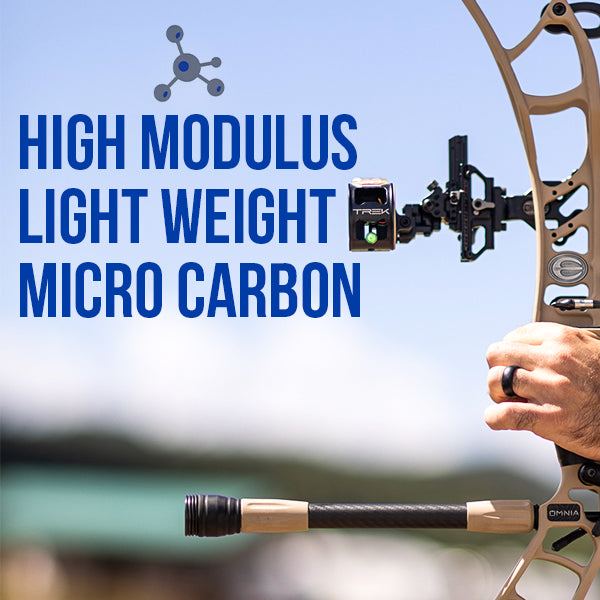Optimizing Your Archery Performance With the Right Compound Bow Stabilizer: a Thorough Introduction
In the world of archery, precision and consistency are vital to achieving ideal efficiency. One critical yet often-overlooked component in boosting precision is the substance bow stabilizer. This plain gadget plays a substantial duty in steadying your goal, lowering bow torque, and absorbing resonances. Nonetheless, the effectiveness of a stabilizer depends upon various aspects, including weight, positioning, and layout. By understanding the subtleties of picking and maximizing a compound bow stabilizer, archers can fine-tune their devices to raise their shooting experience to brand-new levels of effectiveness and control.
Significance of Bow Stabilizers in Archery

Furthermore, bow stabilizers help in balancing the weight distribution of the bow, which can enhance the archer's security while aiming and firing. By including weight to the front of the bow, stabilizers can minimize the quantity of torque experienced upon launch, resulting in a smoother and much more controlled shot - compound bow stabilizer. This weight circulation also aids in holding the bow consistent for a longer period, allowing the archer to aim more precisely
Sorts Of Compound Bow Stabilizers
When thinking about the various kinds of compound bow stabilizers offered, it is essential to understand their distinct attributes and features to identify the most suitable alternative for taking full advantage of archery performance. The most typical types of compound bow stabilizers consist of sidebar stabilizers, front stabilizers, and back stabilizers. Back stabilizers, additionally called back stabilizers, are mounted to the back of the bow and help in counteracting the weight of other devices, resulting in improved stability and consistent aiming.
Variables to Consider When Picking
In reviewing compound bow stabilizers, comprehending the unique functions and functions of each type is vital for making an educated choice on the most ideal option to improve archery efficiency. When selecting a stabilizer, one need to think about the weight of the stabilizer itself. By very carefully examining these aspects, archers can choose a compound bow stabilizer that aligns with their shooting style and optimizes their general efficiency on the archery array.
Setup and Modification Tips
For ideal performance and precision in archery, mastering the installment and change of your bow stabilizer is necessary. Proper installation starts with affixing the stabilizer to the bow's riser, ensuring it is firmly protected. The majority of stabilizers include installing hardware for very easy setup, however it's crucial to adhere to the maker's standards for the certain design you have. Once affixed, readjusting the stabilizer entails discovering the right equilibrium between weight distribution and size. Explore various combinations that site until you attain the preferred feeling and security.
When adjusting the stabilizer, start with little step-by-step adjustments as opposed to radical adjustments. This enables you to examine the influence of each adjustment accurately. Focus on exactly how go to this web-site the bow responds to changes in stabilizer setups and make modifications accordingly. Keep in mind that the goal is to locate a configuration that lessens hand torque, lowers vibration, and boosts precision. Regularly check the stabilizer's rigidity and general condition to ensure it proceeds to operate optimally. By mastering the installment and modification process, you can maximize your archery performance and boost your shooting experience.
Upkeep and Care Guidelines

It is likewise crucial to store your bow with the stabilizer in a safe and secure and secure area when not in use. Adhering to these upkeep and care standards will certainly assist you get the most out of your bow stabilizer and boost your general archery efficiency.
Final Thought
To conclude, why not try these out selecting the best substance bow stabilizer is vital for taking full advantage of archery efficiency. Understanding the relevance, types, factors to think about, installation and modification pointers, in addition to maintenance and care standards can considerably impact one's accuracy and consistency in capturing. By selecting a stabilizer that fits individual requirements and choices, archers can enhance their general efficiency and achieve much better outcomes on the range or in competition.
Bow stabilizers play a crucial function in boosting an archer's precision and consistency by minimizing resonances and stabilizing the bow during the launch of an arrow - compound bow stabilizer.Additionally, bow stabilizers assist in balancing the weight circulation of the bow, which can improve the archer's stability while shooting and aiming. The most typical kinds of substance bow stabilizers consist of sidebar stabilizers, front stabilizers, and back stabilizers. Back stabilizers, also called rear stabilizers, are mounted to the back of the bow and help in counteracting the weight of various other accessories, resulting in improved stability and stable intending. When picking a stabilizer, one must think about the weight of the stabilizer itself